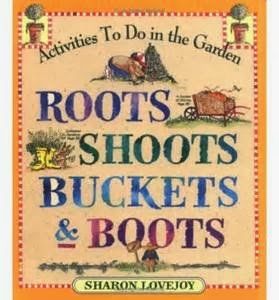 |
| Jack and the Beanstalk |
When he brought them home to his mother instead of the money she expected for her nice cow, she was very vexed and shed many tears, scolding Jack for his folly. He was very sorry, and mother and son went to bed very sadly that night; their last hope seemed gone.
At daybreak Jack rose and went out into the garden. At least, he thought, I will sow the wonderful beans. Mother says that they are just common scarlet-runners, and nothing else; but I may as well sow them.
 |
| Scarlet Runner Vine |
So he took a piece of stick, and made some holes in the ground, and put in the beans.
That day they had very little dinner, and went sadly to bed, knowing that for the next day there would be none and Jack, unable to sleep from grief and vexation, got up at day-dawn and went out into the garden.
What was his amazement to find that the beans had grown up in the night, and climbed up and up till they covered the high cliff that sheltered the cottage, and disappeared above it! The stalks had twined and twisted themselves together till they formed quite a ladder. It would be easy to climb it, thought Jack.
So Jack called his mother, and they both gazed in silent wonder at the Beanstalk, which was not only of great height, but was thick enough to bear Jack's weight. I wonder where it ends, said Jack to his mother; I think I will climb up...
And so it begins...
What other books can we find about gardening? Here are a few of my favorites. There are SO many more to choose from.
What other books can we find about gardening? Here are a few of my favorites. There are SO many more to choose from.
 |
| Peter Rabbit |
A favorite from childhood is, The Tale of Peter Rabbit, by Beatrix Potter. I love all of her stories, but Peter Rabbit was always a favorite. What was Peter Rabbit cautioned not to do?
"Don't go into Mr. McGregor's garden." What did Peter do? What were the consequences? Peter loved the garden and the veggies inside so much that he could not stay away.
 |
| Great beginner gardening book |
"From Seed to Plant", by Gail Gibbons is a great introduction to plant growth and reproduction. It offers clear yet basic information about the entire plant cycle from seed pollination to mature growth. Included at the end of the text are simple facts about seeds and plants as well as a "From Seed to Plant" project that explains how to grow a bean plant.
 |
| Great activities and garden knowledge |
I have several gardening books by Sharon Lovejoy, including "Roots, Shoots, Buckets & Boots". Other favorites by this author inculde, "Trowel & Error" , "Hollyhock Days" and "Sunflower Houses."
 |
| Lots of gardening experiments |
Another fun gardening book is called, "Gardening Wizardry for Kids." Kids learn about plants through more than 300 experiments and projects that use apple seeds, beans, potatoes, herbs -- virtually everything that grows! Whether growing space is as small as a windowsill, or as big as a backyard, children understand plant life through actual involvement.
 |
| Fun Fantasy |
"Stone Soup" is another classic. It's not as much about gardening as it is about sharing what you have. Imagine what each of us could do with a few vegetables and a stone.
We could change the world!
















